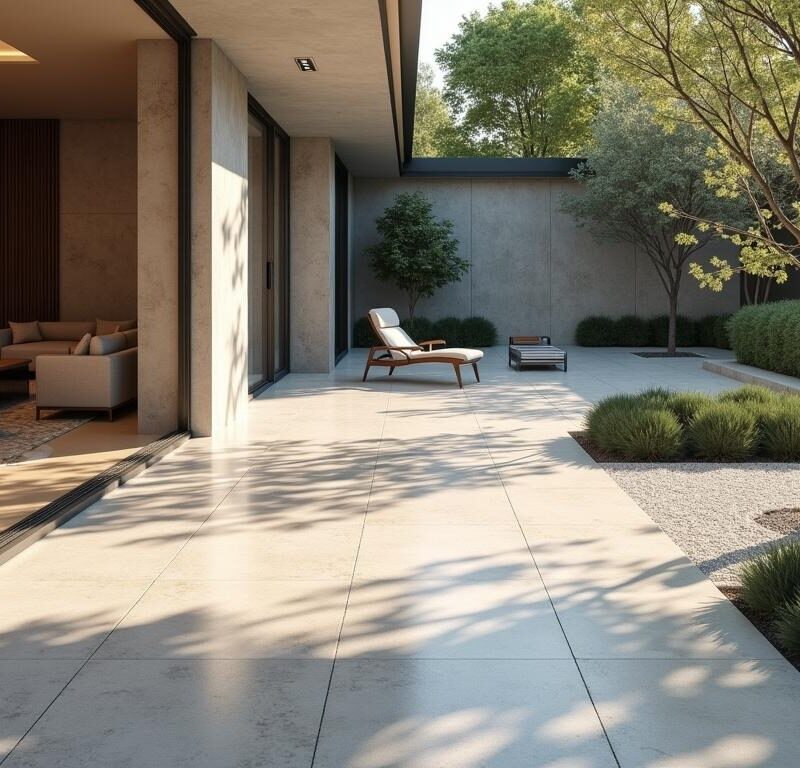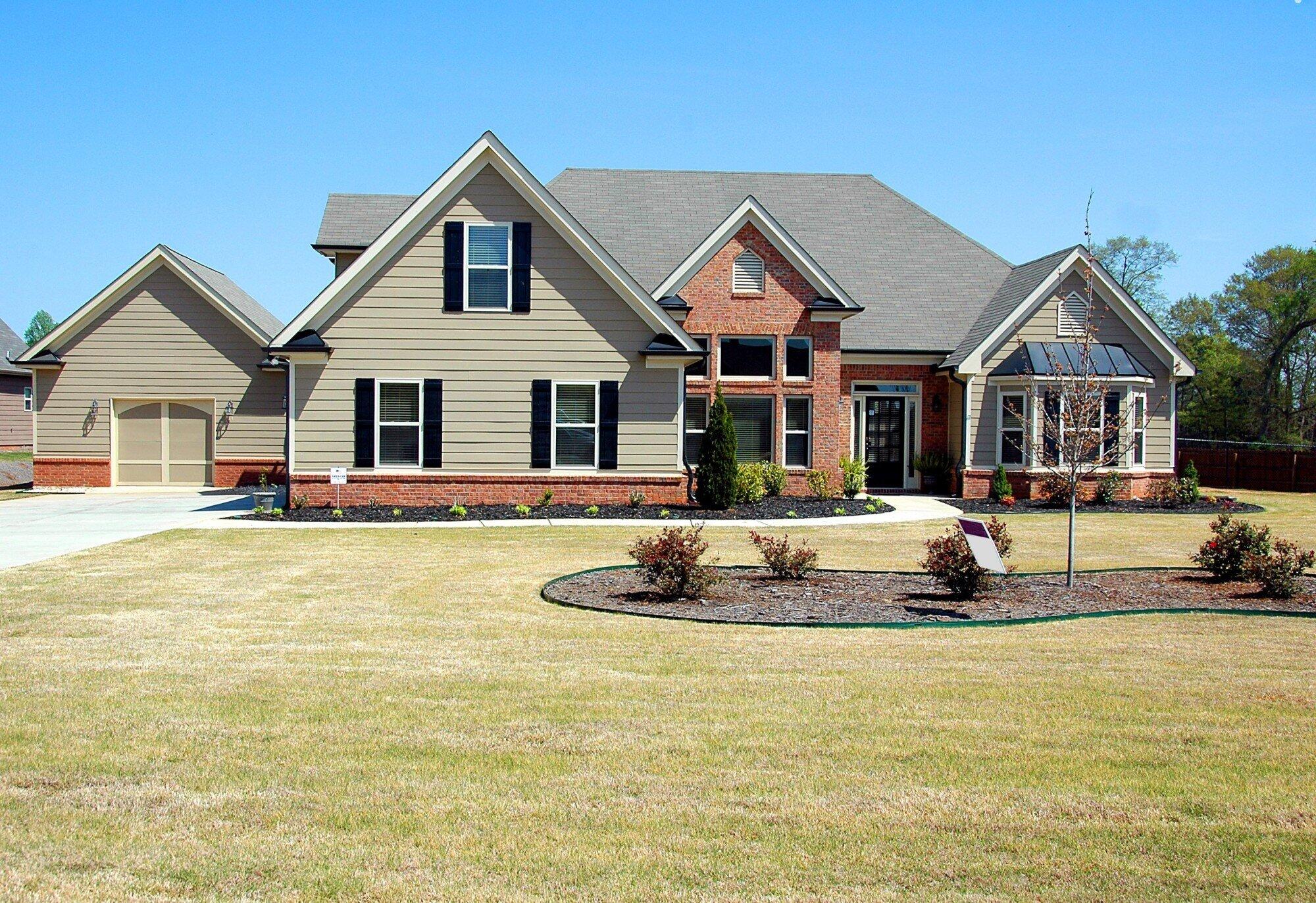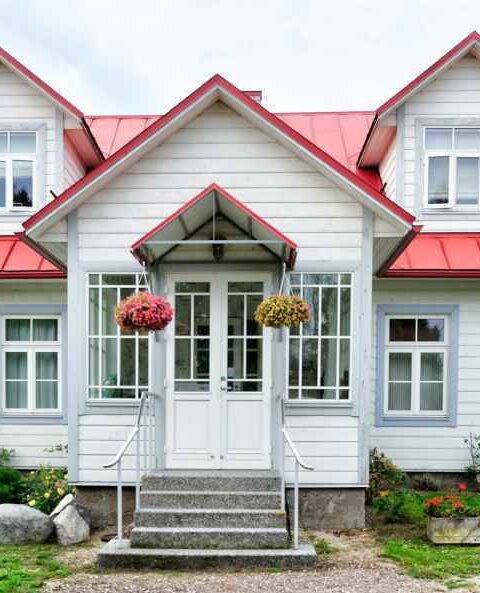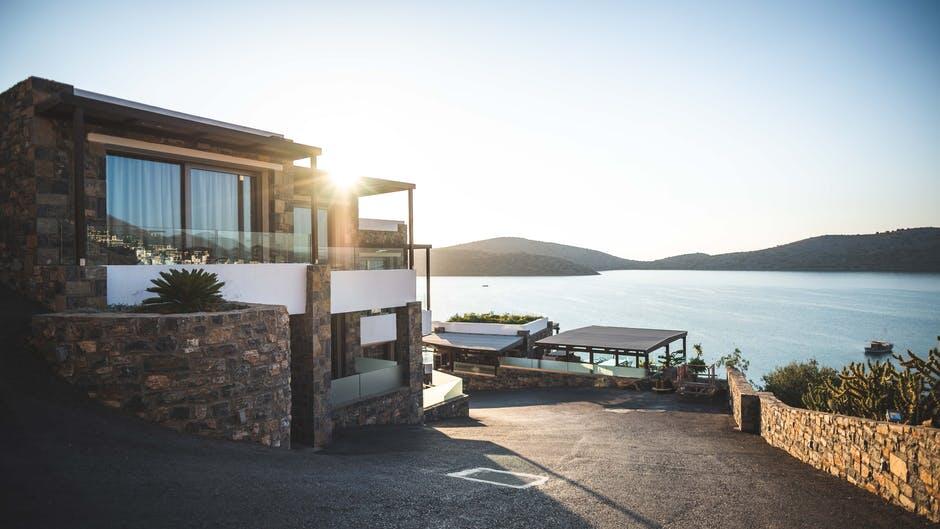For spaces needing durability, style, and minimal upkeep, consider various concrete finishes. Whether it’s a brand-new build or a renovation project, the right finish can make a dramatic difference in appearance and performance. Many people appreciate how easy these surfaces are to clean, and no one can deny the visual impact a thoughtful finish can deliver. Below, you’ll discover ways to select, apply, and care for finishes that align with both practical needs and aesthetic tastes.
The Importance of Choosing the Right Finish
Every building or outdoor area benefits from a strong foundation, but a visually appealing surface is what sets a project apart. Beyond simply looking good, finishes for concrete surfaces must hold up to traffic, weather, and daily wear. If the wrong method is chosen, you might see cracks, discoloration, or even peeling down the line.
In high-traffic spaces like driveways, garage floors, or commercial walkways, durability matters even more. A stamped concrete porch that sees constant foot traffic or a smooth concrete finish in a busy store must resist scuffs and stains over time. To ensure your investment stands strong, it helps to match the finish to the function.
Popular Options for Durable Style
Extraordinary finishes require an understanding of different techniques and materials suited to each environment. You’ll find options ranging from classic to contemporary, all offering distinct levels of toughness and upkeep requirements.
Polished Elegance
Polished concrete remains a favorite for homeowners and businesses alike. The reflective surface looks modern and bright, bringing an almost marble-like touch to floors. A polished concrete application involves grinding down the top layer to achieve an appealing shine. Proper sealing and polishing create resilience against spills and daily foot traffic. It’s common in office buildings and trendy lofts, where low maintenance meets sleek design.
Stamped Sophistication
Stamped concrete offers decorative flair by mimicking bricks, stones, or even intricate tile patterns. Creating a stamped concrete feature involves pressing patterns into the material before it sets, giving you plenty of creative freedom. This approach looks fantastic in patios or pathways, adding a custom touch without the complexity of real stone installation. A protective coating ensures the pattern and color hold up well, even in outdoor settings.
Naturally Textured Surfaces
Exposed aggregate showcases the materials mixed into the concrete, such as small stones or pebbles, to produce a decorative, slip-resistant finish. This textural effect is popular in walkways, pool decks, and gardening areas. It’s also fairly low maintenance—basic cleaning with a garden hose or light pressure washing keeps it looking fresh. Many also enjoy using a broom finish or float finish in high-traffic settings for extra grip and a subtle look.
Bold Color Transformations
Colored concrete delivers pops of vibrant hues that can make pathways or indoor floors feel more personalized. Pigments added to the mix result in uniform color distribution throughout the slab. You can also consider a stained concrete approach using acid or water-based solutions to achieve mottled, artistic effects. Stained concrete floors often become focal points, whether in kitchens, retail stores, or galleries, offering an elegant shine when sealed properly.
Techniques to Enhance Visual Impact
Finishes can go beyond simple texture and shine. Some methods add intricate patterns, interesting layers, or artistic expressions suited to different design visions. In residential and commercial properties, specialized techniques can elevate concrete from a structural necessity to an eye-catching statement.
Microtopping and Overlays
One way to revitalize worn-out floors is to apply a thin overlay or microtopping. These products bond to existing surfaces, so you don’t have to tear out the entire slab. A concrete overlay can correct minor imperfections and supply a fresh canvas for decorative projects. Skilled professionals can achieve a smooth finish or a more textured concrete result, depending on the look you want. A well-installed overlay also extends the lifespan of your floor, sparing you larger repairs in the future.
Acid Etching and Dyes
Creating artwork on concrete begins with acid etching or dyes that interact with the minerals in the surface. Acid etching produces unique marbling and translucent patterns, yielding a distinct look in patios or interior rooms. Meanwhile, concrete dyes add vivid shades, such as blues and greens, for bold statements. Designing colorful concrete floor designs can transform plain spaces into distinctive areas that draw attention.
Fiber-Reinforced Surfaces
For environments requiring industrial concrete finishes, consider fiber-reinforced concrete. It contains fibrous materials that improve overall strength and minimize cracks. Although this approach focuses on durability, it doesn’t mean aesthetics must suffer. A troweled finish or even a decorative concrete design can be used on top if you still want a pleasant visual appeal. This solution is especially popular for warehouses, large commercial garages, and places where heavy machinery might operate.
Low Maintenance with Proper Sealing
Even the toughest materials need some form of protection to stay in prime condition. Concrete sealers create a barrier that blocks moisture, chemicals, and stains from seeping into the slab. Sealing ensures surfaces maintain colors without fading and helps resist freeze-thaw cycles in colder climates.
Regular reapplication of a sealer depends on traffic and exposure. Busy retail areas may need sealing more frequently than a private patio. Concrete sealing also enhances slip resistance, which is crucial for surfaces exposed to water, like pool decks or garages. With minimal effort, you can keep stamped concrete, polished surfaces, and other finishes looking fresh for years.
Creating Decorative Concrete Features
When we talk about decorative concrete, there’s a wide canvas of possibilities. Some homeowners love the look of a terrazzo finish, which mixes chips of marble or granite into the base, then grinds it for a glossy appearance. Others prefer a more rustic vibe with a salt finish or float finish on walkways. Either way, combining the right colors, textures, and finishing tools allows you to craft the perfect atmosphere.
Indoor Applications
Kitchen floors, living rooms, and even walls benefit from concrete wall finishes that transform plain vertical surfaces into eye-catching accent walls. A well-executed textured concrete treatment on a living room wall can add depth and industrial charm without overshadowing decor. Thanks to modern techniques, you can also install garage floor coatings that withstand oil, chemicals, and tire marks. It’s a practical option for homeowners seeking style in their garage or workshop areas.
Outdoor Spaces
Decks, driveways, and patios see more exposure to the elements, so finishes that resist water and temperature extremes are essential. Colored concrete or Coloured Concrete (as some refer to it) can blend with landscaping elements, adding curb appeal to entryways. Salt finish creates a subtle pattern and slip resistance, making it a strong choice for pool decks. Finding a balance between practicality and beauty in these outdoor areas makes all the difference in long-term satisfaction.
Tools and Techniques for Professional Results
An experienced contractor understands how to match the proper finish to the project conditions. Still, advanced DIYers can explore smaller tasks with the right guidance. Concrete finishing tools often include trowels, floats, and edgers that smooth or texture the surface. For more complex finishes like patterned stamping or acid etching, professional expertise usually offers the best outcome.
The Role of Concrete Patterns
Patterns can be both functional and decorative. Concrete patterns can define walkways, highlight seating areas, or establish zones within a larger space. Carefully placed forms and stamping mats allow homeowners to design surfaces that mimic stone or tile, but with fewer grout lines and maintenance issues. It’s essential to execute pattern layouts accurately so they appear intentional, well-aligned, and visually appealing.
Achieving a Smooth Finish Where Needed
While textured finishes shine in outdoor settings, a smooth finish is still in demand for indoor floors and countertops. Creating a perfect smooth surface involves proper floating and troweling during installation. These steps compress the top layer, reducing the likelihood of minor cracks. An expert hand is essential for achieving flawless results, especially for those who want an ultra-modern aesthetic.
Sustainability and Green Approaches
Many builders and property owners seek environmentally friendly concrete solutions. One approach involves using recycled aggregates or low-carbon cement blends. Proper finishing can also reduce the need for repeated repairs or replacements, cutting down on resource consumption. In addition, decorative concrete can eliminate the need for non-recyclable flooring materials, making the space both stylish and planet-conscious.
Fiber-reinforced concrete ties into sustainable practices too. Less cracking and improved durability lead to fewer patches and repairs over the structure’s lifespan. Furthermore, combining finishing methods that reduce the need for chemical-heavy treatments helps minimize harmful emissions. A well-sealed floor also acts as a barrier against moisture damage, preserving the slab’s integrity.
Considering the Long-Term Investment
The decision to invest in a particular finish often boils down to how well it fits daily needs and the potential savings in upkeep. Concrete resurfacing, for instance, can breathe new life into older floors without carrying the high cost of complete removal. Garage floor coatings protect surfaces from the harsh environment of cars and tools, delaying the need for major repairs.
Industrial concrete finishes are designed to endure punishing loads, while still offering customization through occasional staining or overlays. By selecting the right finish from the start, property owners save on costly renovations and frequent maintenance. When properly installed and sealed, these surfaces stand as a testament to both design savvy and responsible planning.
Finding the Perfect Balance
Whether you lean toward a bold stained concrete floor in your living room or prefer the visual freshness of a polished concrete entryway, there’s a finish to match your style. Concrete coatings or overlays can revive worn slabs, while textured effects like exposed aggregate bring practical traction outdoors. Each method brings its own advantages, and the final decision rests on how you want the space to feel and function.
Consider the demands of each area in your home or business, and explore options that align with your personal taste. With so many concrete finishing tools and methods available, you can achieve a space that’s both aesthetically pleasing and built to last. Embracing a finish that matches the function and speaks to your design sense makes all the difference, ensuring you enjoy the end result for years to come.







